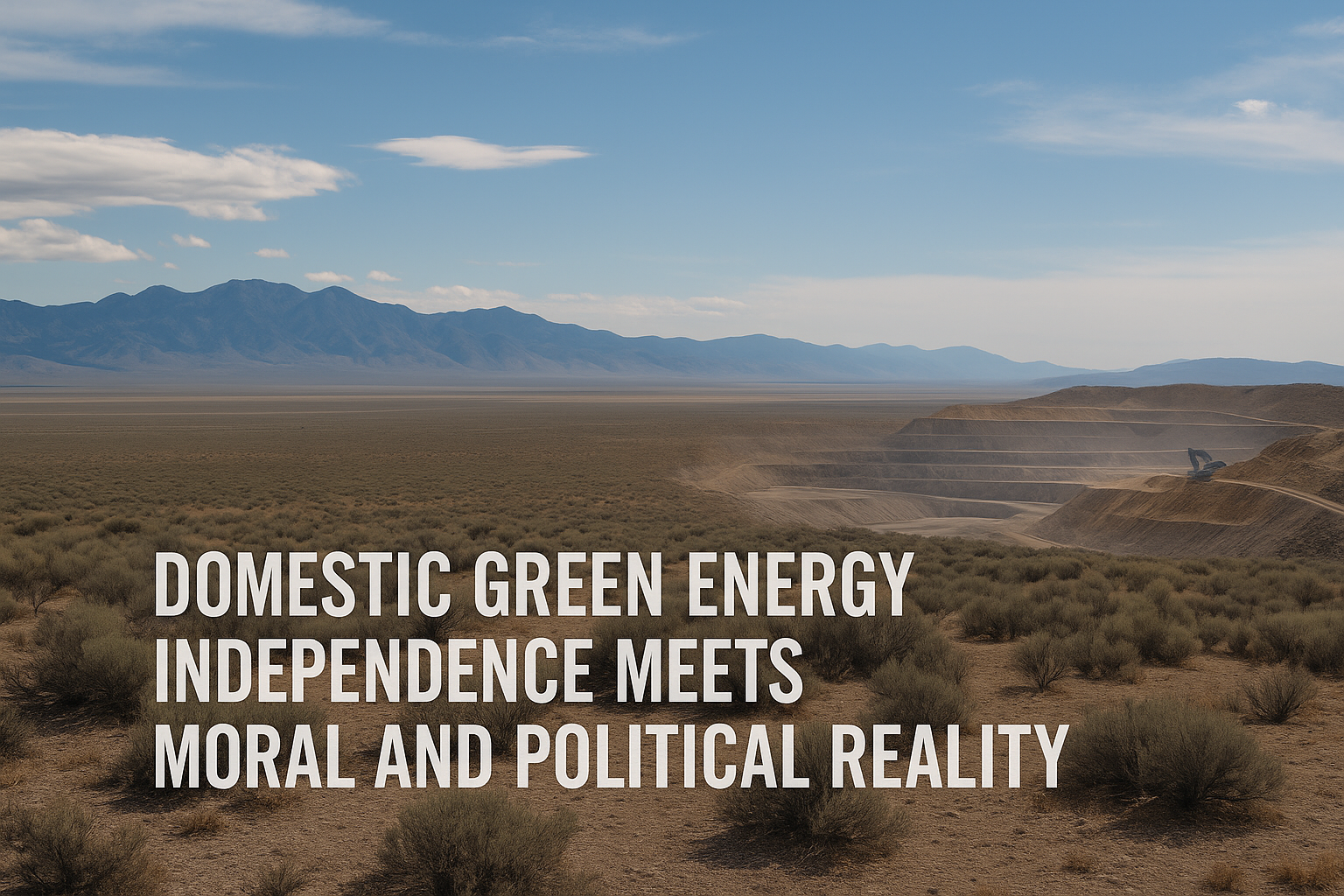Learning from the Past
My high school freshman History teacher, Mike Fitzpatrick, began our first class by quoting Spanish


Both the Biden Administration and the second Trump administration converged on a rare point of agreement: America must mine more rare earth minerals at home. These minerals—17 chemical elements with unique magnetic, catalytic, and electrical properties—are indispensable for electronics, electric vehicles, and renewable energy. While not scarce, they are difficult to extract and process, and today the U.S. relies heavily on imports, particularly from China.
For President Biden, rare earths were critical to the clean energy transition. His administration issued Executive Orders to secure supply chains, provided financing, and sought to streamline permitting. He has cast domestic mining and processing as essential to both national security and climate goals.
President Trump, by contrast, made tariffs his signature tool to promote US businesses and jobs. He imposed duties on copper and other imports but pointedly exempted rare earths, fearing retaliation and industrial disruption. Instead, he leaned on deregulation and Department of Defense contracts to support U.S. projects like MP Materials’ Mountain Pass mine.
Despite their differences, both administrations ran into the same immovable reality: America’s mining ambitions collide with a thicket of spiritual, environmental, and cultural resistance.
The Sources of Resistance
Thomson Reuters journalist Ernest Scheyder, in The War Below, details how proposed mines in Arizona, Minnesota, Nevada, and North Carolina became battlefields of competing values. Indigenous tribes invoked deeply rooted spiritual principles: the sanctity of ceremonial sites, the inviolability of burial grounds, the view of water as a sacred relative, and the interconnectedness of all life. From this perspective, mining is not simply an economic disruption but a spiritual desecration.
Environmentalists, too, see mining as an existential threat. In Minnesota, recreational areas face the prospect of heavy industrial scarring. In Nevada, the Tiehm’s buckwheat wildflower has become a flashpoint. This plant grows only in lithium-rich soils and cannot be transplanted elsewhere; mining threatens its extinction.
Farmers in North Carolina resist projects that would convert fertile cropland into pits and waste sites. Ranchers in places like Thacker Pass, Nevada, fear for grazing land and groundwater. And across the West, legitimate anxieties about toxic runoff and aquifer depletion animate local opposition.
These conflicts are not easily resolved. During World War II, when Japan cut off Asian supply lines, the U.S. government forced through mining expansions despite opposition. Today, however, no such overriding consensus exists. Instead, elected officials find themselves caught between constituencies with irreconcilable worldviews.
Political Paralysis
Scheyder recounts one telling moment: a staff member for a Senator who worked assiduously to reconcile policy disagreements, asked him to delete a tweet noting her support for a mining initiative in her own state. The Senator’s political survival depended on balancing pro-mining voters against those who saw the project as an assault on sacred land.
He deleted the tweet reluctantly, but the episode illustrates the paralysis of American democracy. Our system multiplies veto and conflict points—environmental reviews, litigation, and regulatory hurdles—without providing clear pathways or moral guidelines for reconciling legitimate, but conflicting, claims.
When Policy Ignores Reality
I have seen the effects of this dynamic on a personal level. A friend I advise runs a specialty copper cookware business. She has searched in vain for domestic sources of both raw copper and small-scale production facilities. None exist.
Yet the Trump Administration applied a 50% tariff to copper imports (on top of other tariffs), recently eliminated the de minimis tariff exemption (imports of less than $800 we personally experience when returning to the US), and did not create an off-ramp for businesses in precisely her position—those with no domestic alternatives. This policy was imposed suddenly and aggressively, leaving small firms like hers facing higher costs and potential closure.
The lesson is clear: when governments set exceptionally ambitious policy goals without acknowledging real constraints, they punish the very businesses and communities they claim to support. Just as my friend cannot conjure up domestic copper cookware production that does not exist, the U.S. cannot wish away the cultural, spiritual, and ecological limits to mining.
The Need for Strong, Principled Leadership
Attorney Philip Howard, founder of Common Good, has long argued that America’s legal culture piles on rules that make decisive action nearly impossible. He is right, but this issue goes beyond bureaucratic excess. It is a clash of absolutes.
For indigenous tribal leaders, mining sacred land is a nonstarter. For environmentalists, extinction of a species like Tiehm’s buckwheat is intolerable. For national security planners, dependence on China or the Democratic Republic of the Congo for rare earths is unacceptable.
Reconciling these positions requires leaders with both moral credibility and political skill. They must be able to forge creative compromises: revenue-sharing agreements with tribes, serious commitments to recycling and substitution technologies, expedited permitting in less sensitive areas, and narrowly tailored exemptions when no alternatives exist.
Without that leadership, America will remain stuck in the same cycle—declaring mineral independence as a priority while watching project after project collapse under the weight of irreconcilable opposition.
There is no substitute for strong, principled leadership if the United States is to align its energy, security, and moral priorities. Until then, the dream of green or other energy independence will continue to meet the hard reality of sacred lands, fragile ecosystems, and policies imposed without practical escape routes.